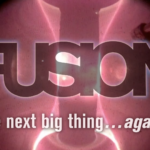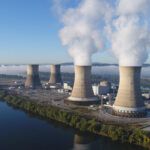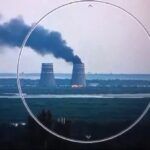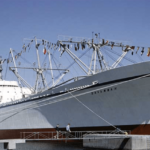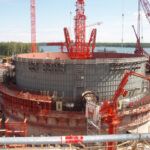Nuclear accidents will happen. What do we do about them?
By Malka Older | March 11, 2021
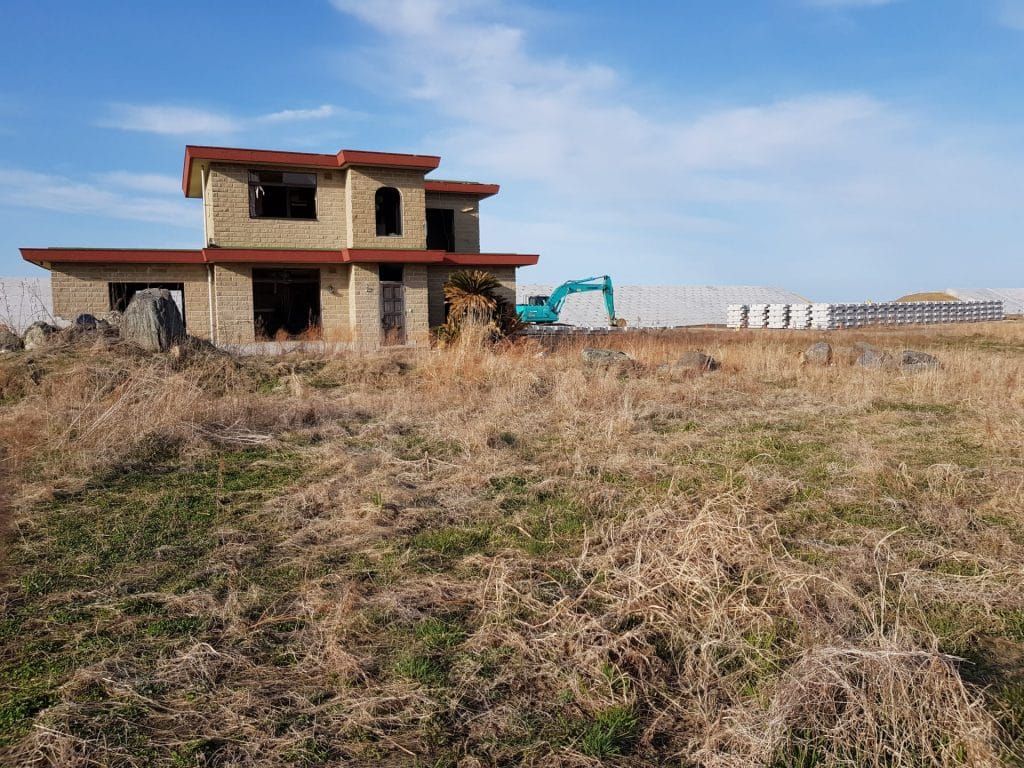 Abandoned house in front of the new seawall being built in Fukushima. Photo by Thomas A. Bass
Abandoned house in front of the new seawall being built in Fukushima. Photo by Thomas A. Bass
Editor’s note: This article is part of a collection of expert commentary on nuclear safety published on the tenth anniversary of the Fukushima disaster, produced in a collaboration between the Project on Managing the Atom at Harvard Kennedy School and the Bulletin.
Accidents are going to happen. Accidents happen everywhere; there are still airplane accidents, and as a species we have logged many, many, many more hours of mechanized air flight than of nuclear fission.
Complexity offers scope for accidents, and nuclear power plants are extremely complex. The unfolding of the Fukushima Dai-Ichi crisis is a history of a group of experts by training—and experts by experience—desperately trying to understand not only what is going to happen but also what is happening in that moment on the inside of a sealed, opaque, precariously balanced system with only hours of margin, while at the same time being consistently stymied by mundane failures such as running out of gas or needing to open doors torqued by a tsunami. If the operators were partially successful, in the sense of averting through their persistence and courage utter catastrophe, that doesn’t erase the real damage that was done: to the land, to the water, to the people who lost their homes, to the families torn up by the long-term uncertainty.
If nuclear power plant accidents are going to happen, what can we do to mitigate them? It’s a trap of a question, because the way to avoid disasters is to not be there—not to build on the fault line or along the eroding coast. But that’s not an answer we like to hear, and in any case power plants apparently need to be close to people. There aren’t any additional structures we can build to block the radiation; evacuations are not only difficult to implement perfectly, they also leave people’s homes behind.
In the book Mission Improbable (1999), Lee Clarke describes industrial contingency plans as fantasy documents, designed to soothe doubters and offer cover to regulators and investors without providing substantive, feasible actions. Some of his examples are so ridiculous it’s tempting to imagine this as the distant past, but to take one modern example, the safety planning information for Millstone Power Station in Connecticut, USA, does not include any evacuation routes for people without cars, because there isn’t one.
Do we care enough about the people who live there to keep them safe if they choose not to own a car? If they can’t drive for medical reasons? If on the day the disaster happens they haven’t filled up the tank?
If accidents are going to happen, and we can’t mitigate them, what are the options? Either we accept the costs of deaths, illness, stress, displacement, and trauma, or we choose a different cost. When we question nuclear energy, we are reminded that coal damages health at a horrific global scale; that natural gas is both vulnerable to earthquakes and, with fracking, creates them; that oil destroys the environment even when it isn’t spilled; and that even the renewables are not perfect.
But if there is not enough “clean” energy, there is still a choice: We can reduce the energy we use, as Japan did in the summer after the Fukushima Dai-Ichi accident. Affordable energy makes our way of life possible, but to excess: How much is it worth to us to keep the lights on in empty office buildings all night, power escalators with no one on them and enormous refrigerators for food that won’t get eaten, run air conditioners cold enough so that we can wear the layers of business wear we have decided make us look professional? Perhaps it will take time to ramp up wind and solar power and find alternatives to critical energy needs, and in the meantime by all means let us improve both safety and contingency plans. But we waste far too much energy now to claim an imperative to greater risk and damage.
Read more expert commentaries in this collection »
Together, we make the world safer.
The Bulletin elevates expert voices above the noise. But as an independent nonprofit organization, our operations depend on the support of readers like you. Help us continue to deliver quality journalism that holds leaders accountable. Your support of our work at any level is important. In return, we promise our coverage will be understandable, influential, vigilant, solution-oriented, and fair-minded. Together we can make a difference.
Keywords: Fukushima, Fukushima Daiichi, Fukushima disaster, Tepco, commentary, fukushima10, nuclear energy, nuclear power
Topics: Nuclear Energy



